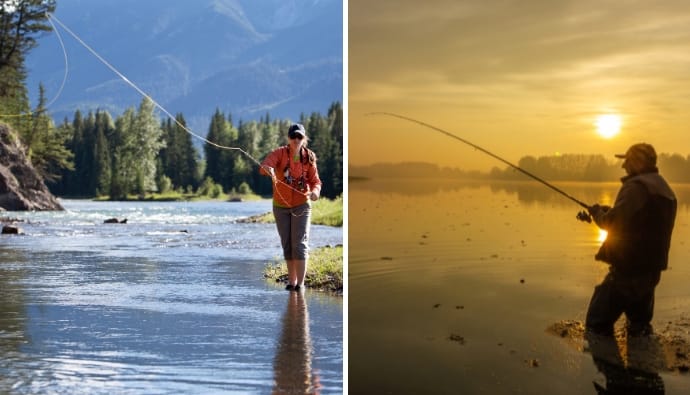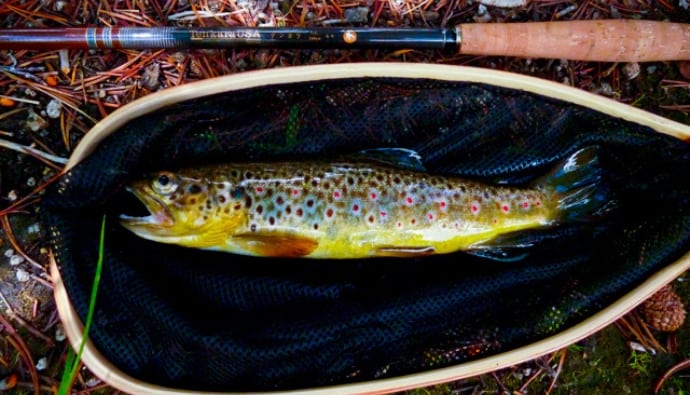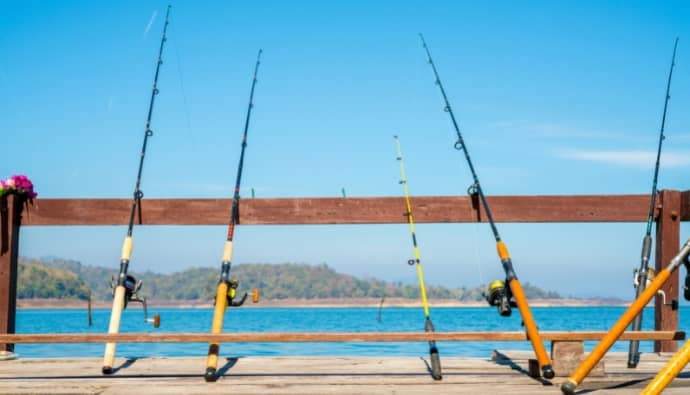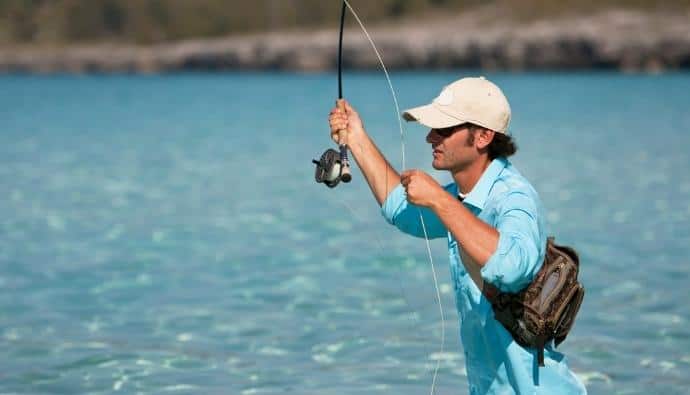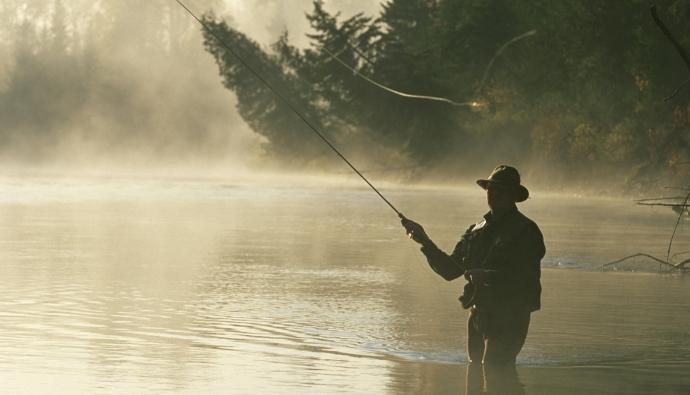Saltwater fly fishing is one of the most wholesome forms of fishing for fly anglers. Not only do you have to deal with the exciting games in saltwater fish.
You also get to fish in some of the most beautiful locations around the world. While saltwater requires some skills such as precision and the ability to cope with wind, it is a difficult sport.
All you need to have a successful fishing trip is the appropriate saltwater fly fishing gear and the right techniques.
We have put together a beginner’s guide that contains helpful tips and techniques to give you the best saltwater fly fishing experience.
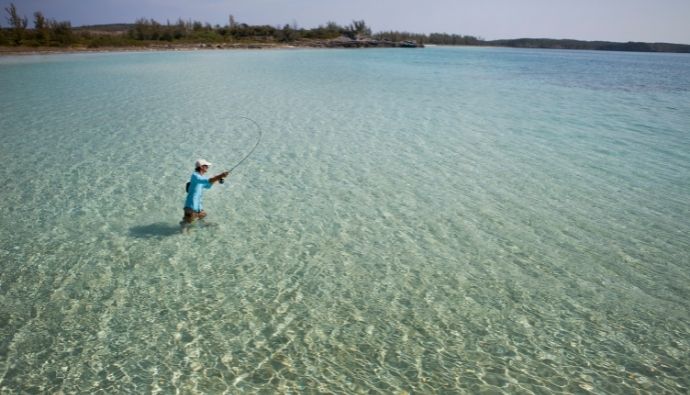
Best Saltwater Fish to Look Out For
There is a wide range of amazing saltwater fish to look out for on your fishing trip. We have highlighted some of the best below, making sure to add their characteristics.
Barracuda
Barracuda is a top choice for sight fishing. They are known to feed in the flats, having a great vision that allows them to spot prey as far as 20 ft away.
Due to the vision and sensitivity of barracuda, precision is key in order not to spook them. Needlefish flies are best for barracuda.
Bonefish
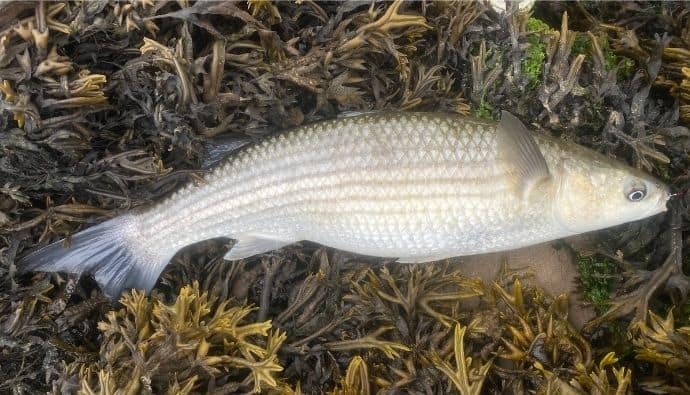
Just like Barracuda, bonefish is a great choice for sight fishing. This species of fish are usually found in warm tropical waters.
Bonefish can be elusive, as they are unbelievably fast and easily spooked. Their elusive nature adds to the fun of fishing for bonefish.
Catching bonefish requires wading the flats and hard sand. You can also catch bonefish by poling them along in flats boats.
It is best to fish for bonefish using flies that resemble their natural prey. Their natural preys include shrimp, crabs as well as other crustaceans.
Stripped Bass
Also known as striper, striped bass are popular among anglers due to the fact that they are big fish. Not only are striped bass big, they are also very strong fish and as such you must prepare for a good fight.
Stripped bass typically go for live bait such as gizzard shad and threadfin. It is therefore best to use flies like whistlers and deceivers that mimic flies when fishing them.
Snook
Snook is a saltwater fish species that is usually found in warm water. You can find them in flats throughout the year. In late spring, they move to coastal bays and beaches. Snooks are most active in water that is 70 degrees and above.
Casting your fly when fly fishing for snook should be done with a quick strike. For this, you might require foam poppers, hair bugs, and a baitfish.
Redfish
Redfish is a top choice saltwater fish species among anglers. They can typically be found in murky waters, which is why a large fly is required when angling for them.
The casting and presentation of your fly line need to be precise when trying to catch redfish.
Permit
A permit is a very difficult species to fish, due to the fact that they are easily spooked. In addition to that, they are bottom feeders and therefore require a lot of patience and precision when fishing for them. Weighted crab-like flies are best for fishing permits.
Other saltwater fish to look out for include dolphinfish, pacific sailfish, tarpon, and roosterfish.
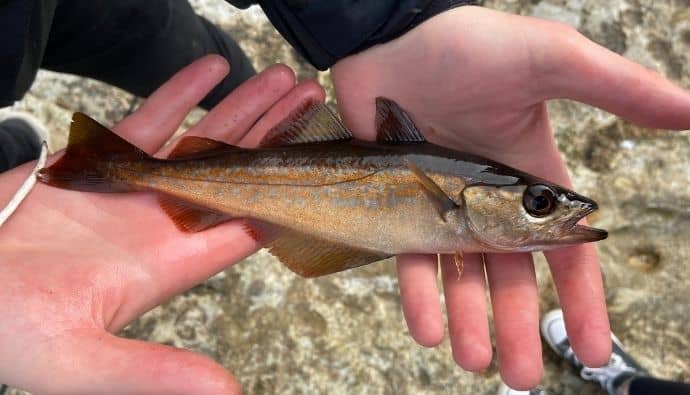
What You Need For Saltwater Fly Fishing
As a beginner saltwater angler, you need to get your saltwater fly fishing gear before embarking on your first fishing trip. The mistake that a lot of anglers make is using their freshwater fishing gear for saltwater fishing.
However, there is a clear distinction between both forms of fishing. This is why it is important to build a fly fishing tackle specifically for saltwater fishing.
The first thing that you need is a fly rod that can work on the ocean. For saltwater fly fishing, it is best to make use of fly rods with large butts. The large butt enables you to make longer casts when dealing with strong winds while fishing.
As a beginner, a multi-purpose fly rod works just fine, as long as you are not targeting specific fish. Stiff action rods are also effective when fishing salt water. If you are targeting specific fish, then the size of your fly rod is important.
For redfish, striped bass, small bonefish, and speckled trout, an 8-weight rod is perfect. If you are going for bigger fish like barracuda, permit, and tarpon choose a 9 or 10-weight rod.
The fly reel is the next thing to get after a fly rod. Just like the fly rod, there are some factors to consider when choosing a fly reel for salt water.
Look out for the drag type, as you want a reel with a strong drag. The arbor size of the reel is also crucial, as it determines how fast you can strip your line in.
Ideally, your reel should be able to take up to 150 ft of fly line and backing. This will cover the possibility of your line cutting while in the salt water.
Your choice of fly line depends on the species of saltwater fish that you are catching. The conditions that you are fishing in, are another thing to consider when choosing a fly line.
You can either go for a sinking line or a floating line, or even both in case of unforeseen occurrences.
Other things that you need to get are a leader, a tippet as well as fly backing. Thankfully, you can everything that you need at a local tackle shop.
Picking Your Saltwater Fly Fishing Destination
There are many nice spots for saltwater fly fishing around the world. However, you might end up wasting your time if you do not what to look out for.
It is important to have a destination in mind to save yourself from casting aimlessly. Below are some exciting locations for saltwater fly fishing.
- Bahamas: If you want to enjoy an unforgettable saltwater fishing trip for bonefish, the Bahamas is the place to go.
- Florida: Florida is a great destination for saltwater fly fishing. The game that Florida has on offer includes permit, bonefish, snook, and tarpon.
- Christmas Island: If you plan to have a swell time catching bonefish, then Christmas Island is the place to be. It is a common destination for fly rodders due to the abundance of bonefish in different sizes.
Other interesting destinations include Guatemala, Louisiana, the Indian Ocean, Fanning Island, and Cuba.
Saltwater Fly Fishing Tips
As a beginner saltwater angler, there are some tips that you need to make a good start. Some of these tips are discussed below.
- Learn the Double Haul Cast
- Always Strip Set
- Never Leave Home Without The Right Tackle
Conclusion
Saltwater fishing is a different sport from freshwater fishing, and you must acknowledge that to have the best experience.
Make sure to get your saltwater fishing gear as well as suitable accessories. This will enhance your casting when targeting big fish.
Also, be sure to pick out a destination and pack your fly tackle appropriately. Wear protective clothing and wear polarized sunglasses. Be gentle with the fish and always use the appropriate fly rod weight when fishing for different species.


 Facebook
Facebook YouTube
YouTube
